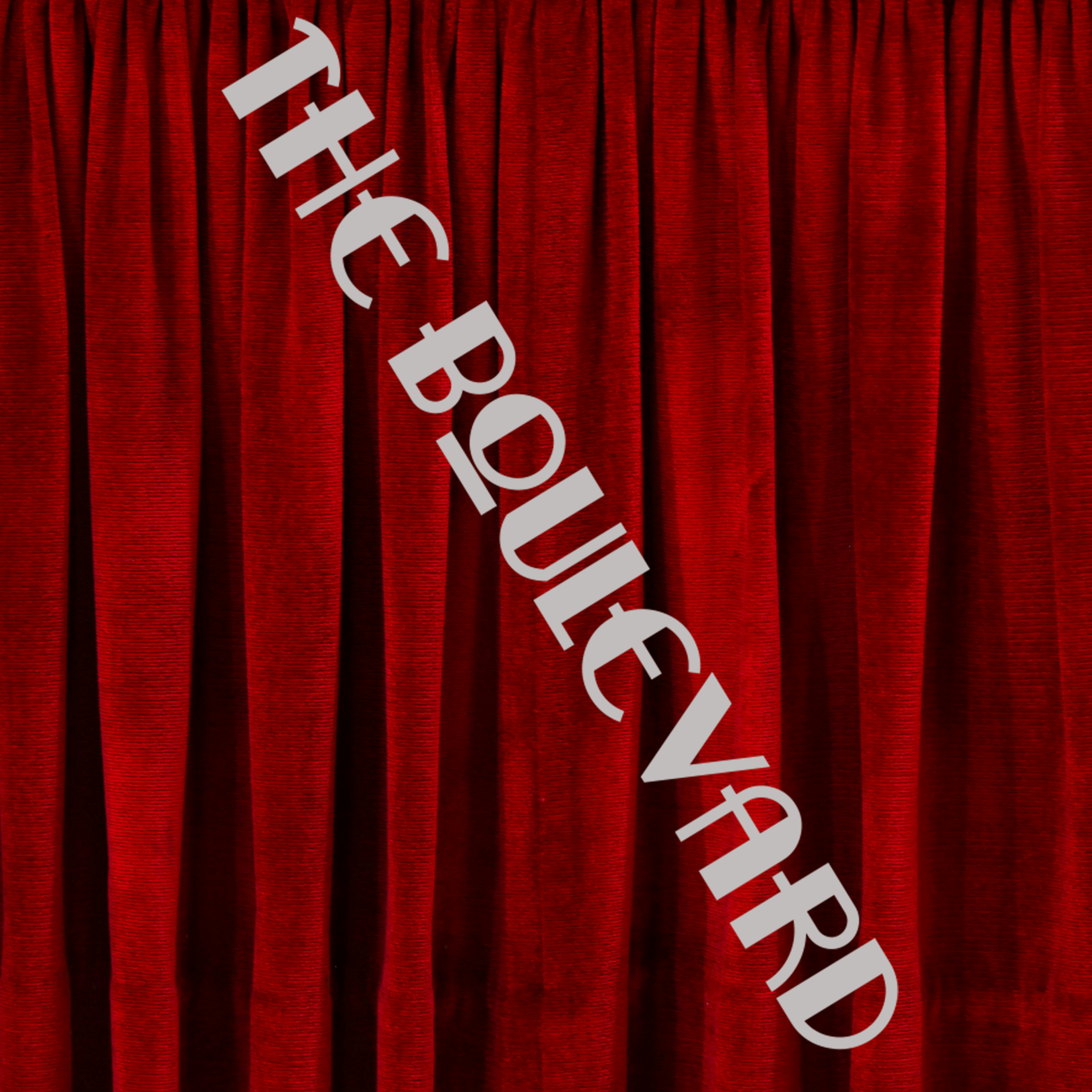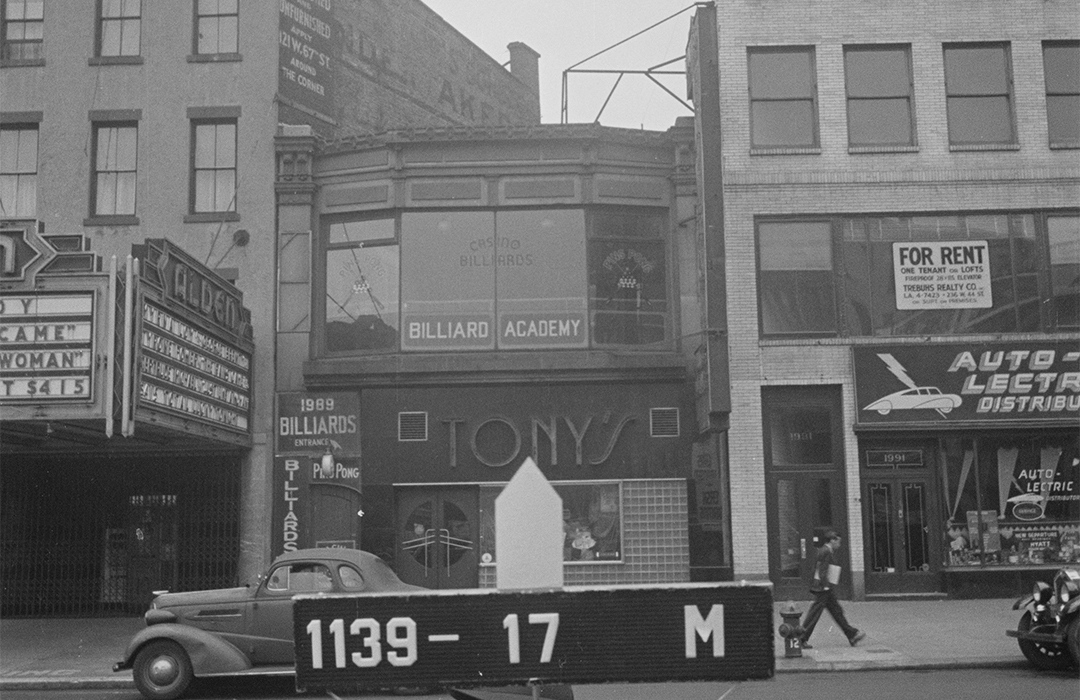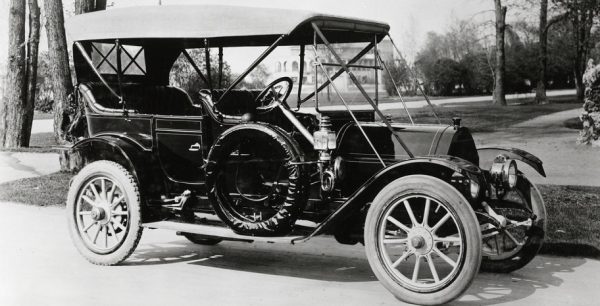
1989 Broadway
by Tom Miller
Born in Dundee, Scotland, Thomas W. Lamb arrived in New York in 1883 at the age of 12 and went on to study architecture at the Cooper Union. Eventually, after working as a building inspector for the city, he established his architectural office, Thomas W. Lamb, Inc. By the end of World War I, he would be nationally known for his theater designs. But his first commission for a theater would not come until 1909.
In the meantime, on October 29, 1905, Harry L. and Lilly S. Toplitz purchased “an old four-story building,” as described by The Evening Post, at 1989 Broadway. They hired the still relatively unknown Thomas W. Lamb to design a two-story commercial building on the site. Construction began in April 1906 and was completed before the end of the year. Lamb’s 28-foot-wide structure featured a vast show window at ground level, and a faceted bay at the second. Stone piers at the sides were connected by a decorative terra cotta parapet.
Broadway above Times Square was known familiarly as Automobile Row, and in 1989, Broadway was leased to the Darracq Motor Car Company. An advertisement in April 1907 called the Darracq, “The Car De Luxe for 1907.” Boasting its 40- and 50-horsepower six-cylinder engines, the ad promised, “Can give its dust to any road machine on the market if necessary.”
The Broadway building held Darracq’s showroom. On March 25, 1907, the New York Tribune reported, “A new repair shop has been opened, which will occupy the entire two-story building at No. 20 West 60th Street.” The article said the Darracq Motor Car Company “has found it necessary to utilize its entire building at No. 1989 Broadway for showroom purposes and enlargement of office space.”
He struck Patrolman Edward Donovan, who was doing traffic duty at Grand Street and the Bowery.
Despite the optimistic outlook, the following year, on March 6, 1908, The Evening World reported that the Darracq Motor Car Company was bankrupt. Three months later, the Toplitzes leased the building to the American Zust Motor Co, makers of luxury vehicles. The “Zust Car” was described in a January 13, 1910 ad in The Sun as “The Aristocrat of Europe.” It said the cars were “Made by the famous firm of Italian tool and machinery makers, known throughout the Continent for the exceptional quality of the materials and the skillful workmanship employed in its production.” The firm’s landaulet town car cost $4,800—a pricey $159,000 in 2024.
Like the Darracq Motor Car Company, the residency of the American Zust Motor Co. would be relatively short. The building was soon sold to Hamilton Carharrt of the Carhartt Auto Sales Company. Among the firm’s employees in 1911 was 19-year-old Joseph F. Wiggins, a “demonstrator.” On the afternoon of August 21 that year, Wiggins drove off in the “two-seated raceabout” automobile of his manager, K. C. Bedell, without permission. Wiggins picked up four friends, and they went to a saloon on Park Place.
The group was headed back uptown when Wiggins swerved sharply to avoid a milk wagon. He struck Patrolman Edward Donovan, who was doing traffic duty at Grand Street and the Bowery. The New York Times said Wiggins later insisted, “he did not know he had struck the bluecoat until he heard his companions urge him to put on more speed.” The article reported, “In their subsequent run they struck a lamppost and burst the auto’s lamp and one of the tires.” Wiggins said, “I did not dare to stop because I feared we would be lynched.”
In the meantime, Officer Donovan was badly injured. He suffered “a concussion of the brain, a torn scalp and many other wounds,” according to The New York Times, which added, “His condition is so serious he may not recover.” Another policeman had been standing nearby and commandeered a newspaper delivery wagon. He pursued the speeding vehicle as far as 37th Street when it was lost. Nevertheless, the police now had a good description of the automobile.
The day did not end well for the teenager. The New York Times reported, “Eventually they traced [the automobile] to a garage in No. 1989 Broadway. Detectives De Cantillon and Halsey saw a car in front of the place with a battered mudguard, a smashed lamp and one of the tires blown out. As they reached the garage they saw the manager trying to learn who had taken out the machine.”
Wiggins was arrested for grand larceny and felonious assault. One of his passengers, 19-year-old bellboy Frank Barrett, was also arrested on the larceny charges. Although, somewhat surprisingly, K. C. Bedell refused to press charges of auto theft, Wiggins was still held on the assault charges.
A month after the incident, the tradition of bankruptcies at 1989 Broadway continued when the Carharrt Automobile Sales Company failed. Hamilton Carharrt, however, retained possession of the property. He quickly leased it to the Hupp Corporation, makers of the Hupp-Yeats automobile.
Hupp-Yeats automobiles were electric. An advertisement in October 1911 for the Hupp-Yeats Electric Coach noted, “The woman who drives an electric now demands the same grace, the same beauty of line and the same luxury in her equipage that she exacts in her costumes.” To avoid understandable confusion, the advertisement stressed that the Hupp Corporation was “distinct from and having no connection whatever with the Hupp Motor Car Co.”
The Hupp Corporation left 1989 Broadway in 1913, when the Phillips Rubber Works moved in. The firm sold automobile tires by makers like Goodyear Tire & Rubber of Akron, Ohio. Because it did not need both levels, the second story was leased in 1914 to George Kiriazis “for a term of five years for restaurant purposes,” according to the Record & Guide. Phillips Rubber Works still occupied the ground floor in 1919 when the restaurant lease expired. And it appeared that the end of the line for the little building was near.
“The woman who drives an electric now demands the same grace, the same beauty of line and the same luxury in her equipage that she exacts in her costumes.”
On February 14, 1920, the Record & Guide reported that Hamilton Carharrt had sold “the two-story taxpayer building at 1989 Broadway and the four five-story flat houses at 129 to 135 West 67th street.” The new owner, said the article, intended to erect a theater on the site, the lobby of which would replace the Broadway building.
But something derailed those plans. On July 31, 1921, an advertisement in the New-York Tribune offered 1989 Broadway for rent, saying it was “suitable for automobile business, offices and showrooms.” The ground floor was leased to Adolph H. Mayers, a dealer in Victrolas and radios, and the upper floor to Ralph L. Brannian, an interior decorator.
Adolph H. Mayers would remain here into the Depression years. Families browsed his showroom for Victrola record players and radios—either of which could be the size of a large piece of furniture or could fit on a tabletop. On April 12, 1924, Mayers advertised the newly released RCA “Jewel Box” Radiola, calling it “a beautiful piece of furniture presentable in the finest of music rooms.” The radio cost $275 (without batteries).
When Prohibition ended in December 1933, the ground floor of 1989 Broadway had already been leased to Jensen’s Brauhaus, a German-style tavern and restaurant. Henry Rosenberg took over the lease the following year. It may have been Rosenberg who renamed the bar Tony’s around this time and gave it an Art Moderne storefront with glass blocks and vitrolite panels.
Thomas W. Lamb’s attractive little building survived until around 1984 when the blockfront was demolished for 1991 Broadway, a 27-story residential building designed by John Harding & Associates.
Tom Miller is a social historian and blogger at daytoninmanhattan.blogspot.com
BUILDING DATABASE
Keep Exploring
Be a part of history!
Think Local First to support the business at the Privately Owned Public Space at 1989 Broadway:



